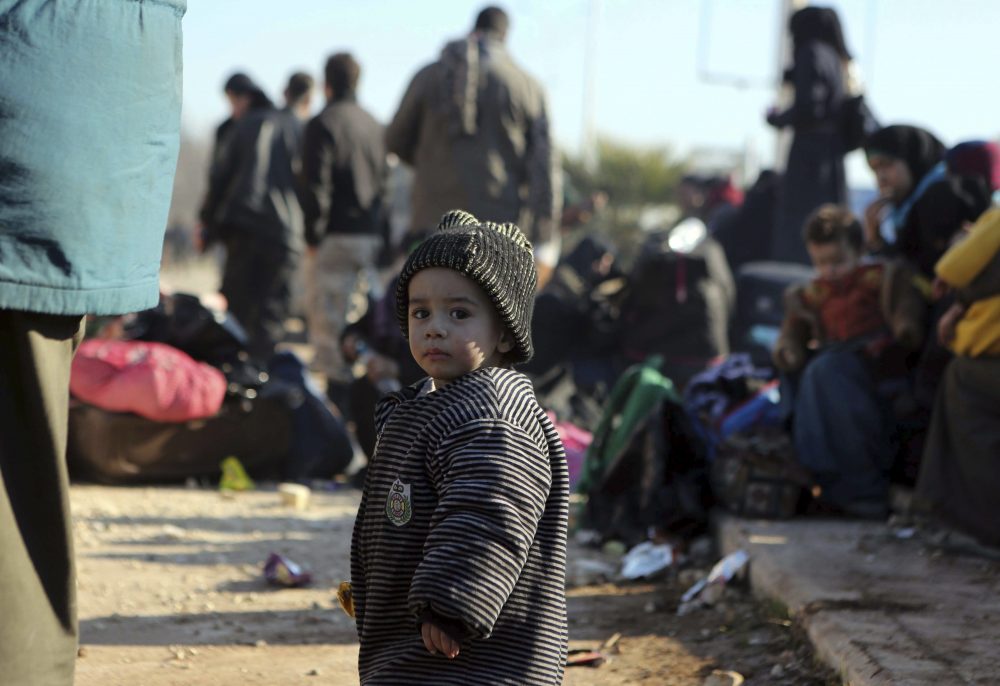Advertisement
Syria: What Are We Going To Do Now?

COMMENTARY
And so, in this supposed season of peace on earth, it has come to this: As the Syrian rebel center of Aleppo falls, its country’s dictator indulges his blood lust one last time, his artillery killing a final few in the conquered city.
Aleppo’s collapse has confirmed many things we already knew, from Syrian President Bashar al-Assad’s brutality to the cold-blooded thuggishness of his puppet master, Russian President Vladimir Putin. Those of us who hoped Putin’s Syrian intervention would pulverize the Islamic State battling Assad have watched the Russian-Syrian alliance mow down civilians and other rebel forces instead. What Aleppo’s fall doesn’t mean is that Syria’s almost six years of civil war are over. “We have wide swaths of the country that are still controlled by either the Islamic State or by the different opposition forces,” a reporter in Aleppo told NPR.
I'm an admirer of President Obama's prudent caution abroad and determination to avoid "stupid sh--" (sending U.S. troops into Syria would certainly qualify). Hillary Clinton’s suggestion as secretary of state that we arm moderate rebels would have risked our arms falling into ISIS’s hands, especially now, when those alleged moderates are weaker than ever. Still, the faces of Aleppo — especially the children, the lucky ones huddling in fear, the unlucky dead from adult hatreds — cry out for humanitarian intervention, with a clear-eyed understanding that it may fail.
What Aleppo’s fall doesn’t mean is that Syria’s almost six years of civil war are over.
It’s worth recalling that Clinton’s successor, John Kerry, bewailed the absence of a threat of force to bolster his efforts at brokering peace. But what kind of force can we prudently use? If targeting civilians for massacre is Assad’s most damnable atrocity, blasting his runways to prevent his bombers from taking off on their killing missions would be one step. Nicholas Kristof, the well-traveled New York Times columnist, argues for rubble-izing runways with missiles fired from Turkey, whose officials, Kristof says, tell him they’d permit the strikes.
We’ve already imposed a partial leash on Assad’s bombing, Kristof writes, via a “de facto no-fly zone” in northern Syria to protect American advisers there. Nevertheless, after an election in which millions voted for Donald Trump and Bernie Sanders, purveyors of nonstarter ideas, I’m obliged to point out why so-called cratering runways is not a lead-pipe cinch. Putin could choose a deadly game of chicken, putting Russian aircraft at Syrian air bases, daring us to ground those as well — or accidentally hit one. He and Assad could launch planes from a non-military airport; would we target runways there? And rotary wing attack craft don’t need runways. (We and Russia have too many common interests, and too much to lose from confrontation, to further freeze our frosty relations.)
Another option, suggested by New Yorker writer Ben Taub on WBUR’s On Point, would be for U.S. planes to drop food and medicine into besieged areas. Taub thinks Assad would be suicidal to attack American planes, and he doubts Putin wants to go that route.
Perhaps a newly inaugurated President Trump could leverage his fabled bromance with Putin to threaten or destroy Syrian runways and send aid in a way that won’t threaten the Assad regime. Better still, Obama could try them now. And if this fails? Then we’ll know the failure was due to an insoluble problem. It won’t be because we stood by idly. Imagine confessing that as you look into those frightened children's faces.
